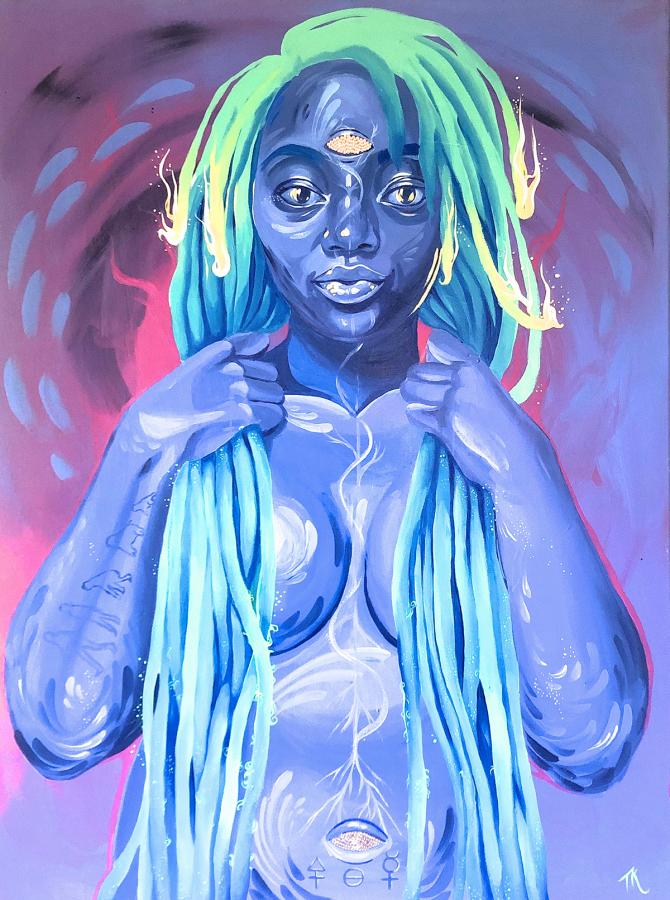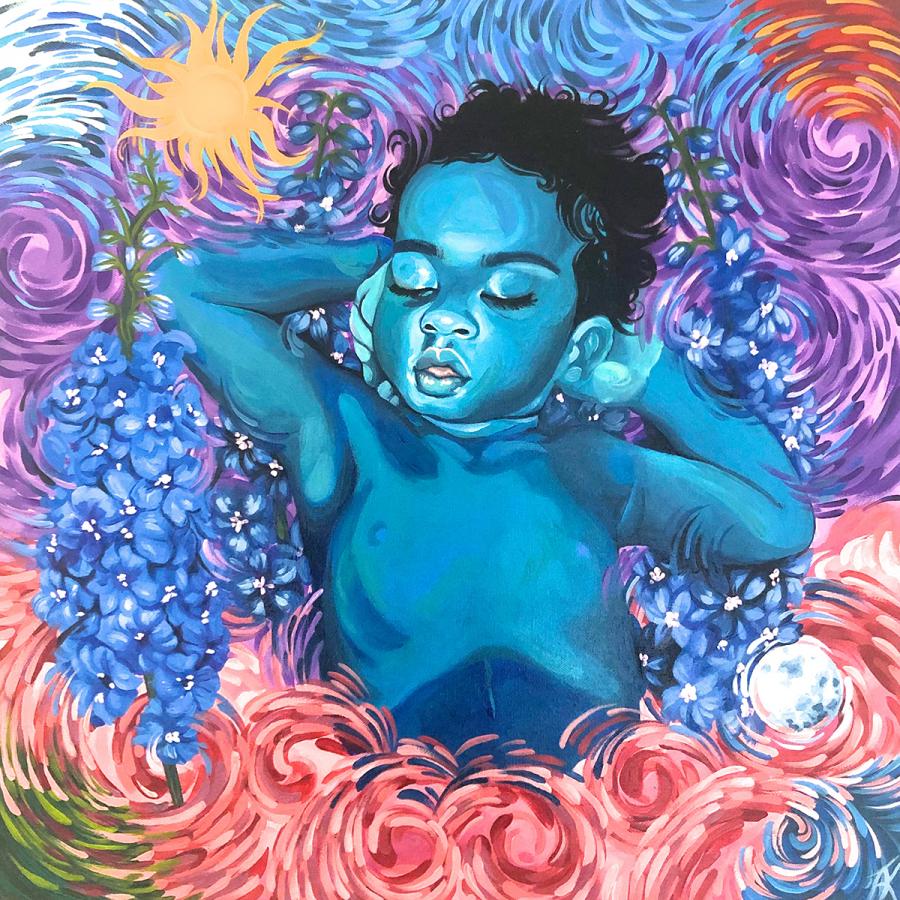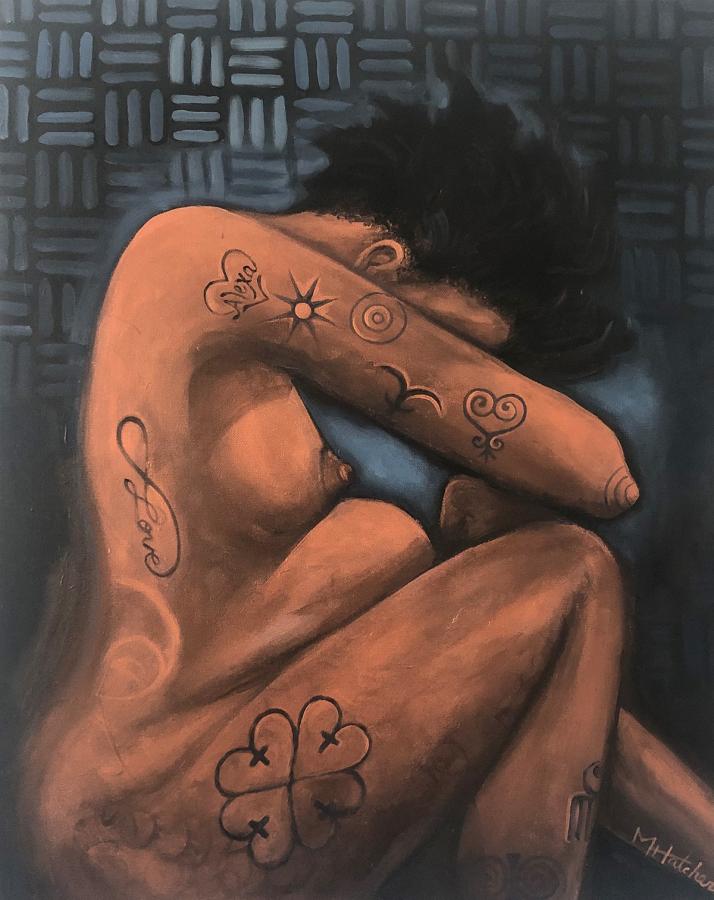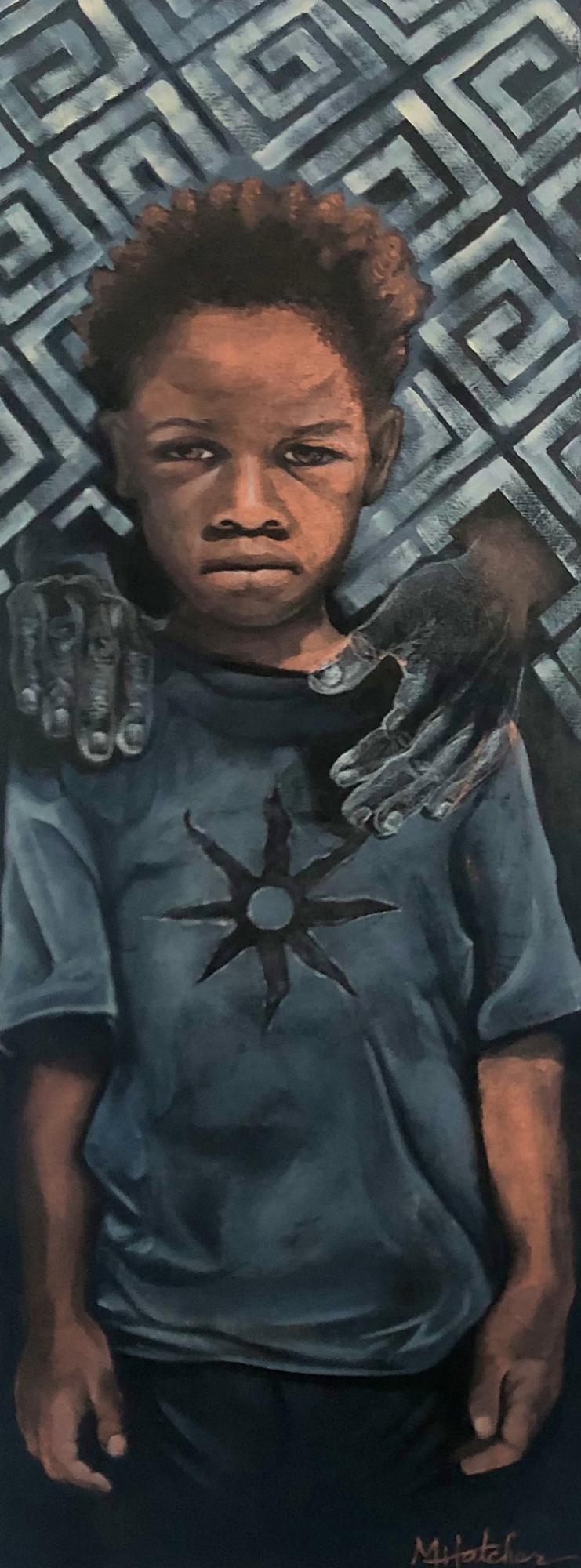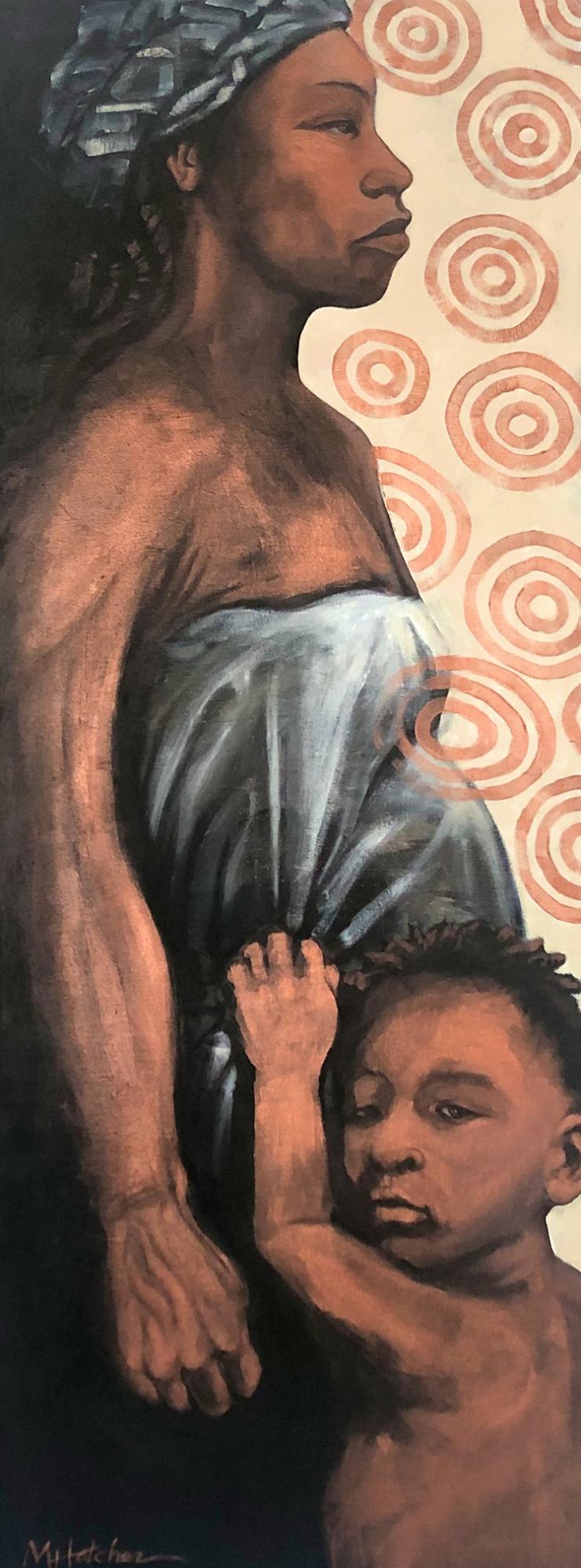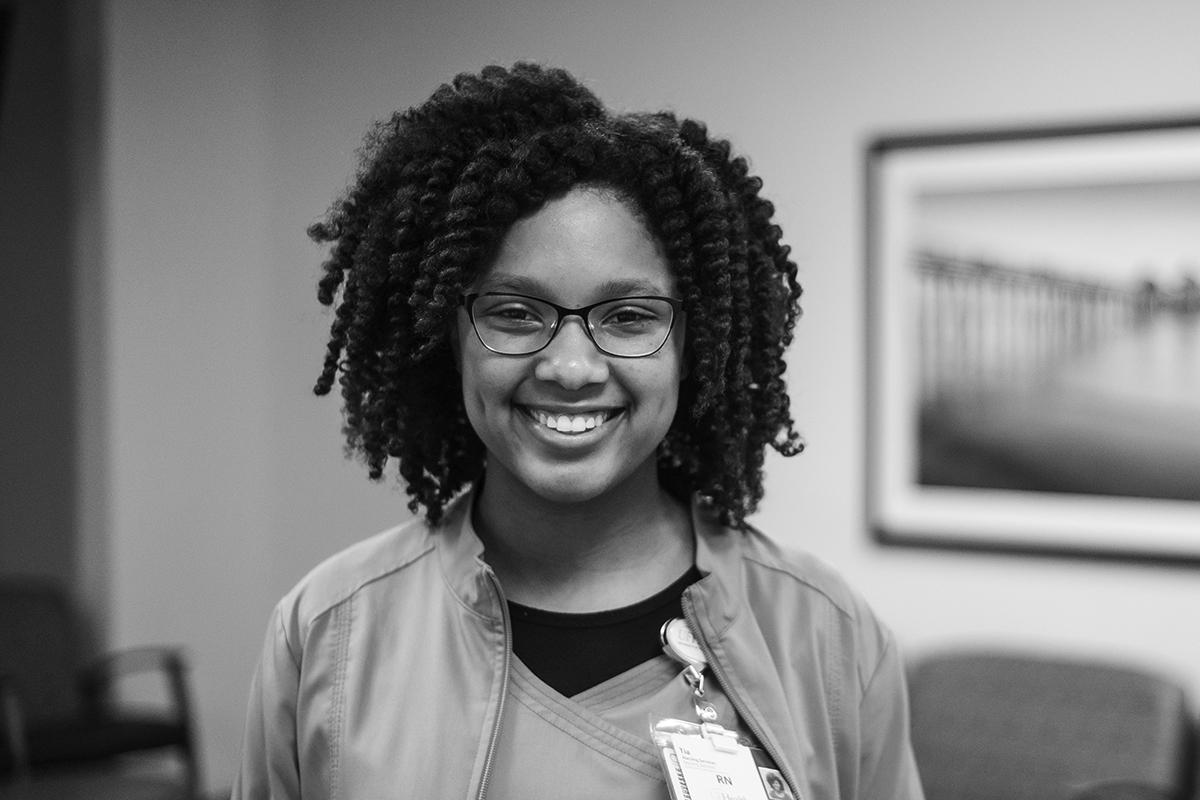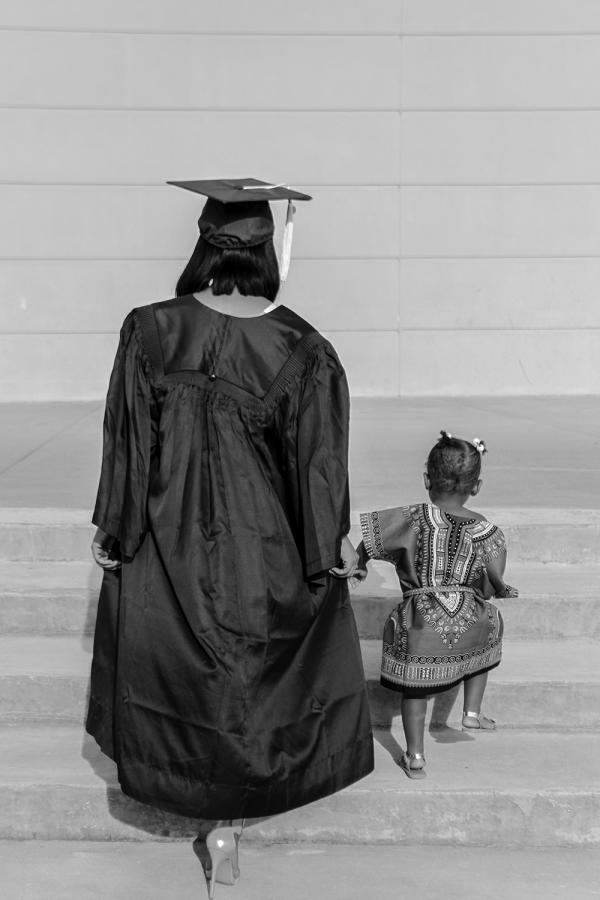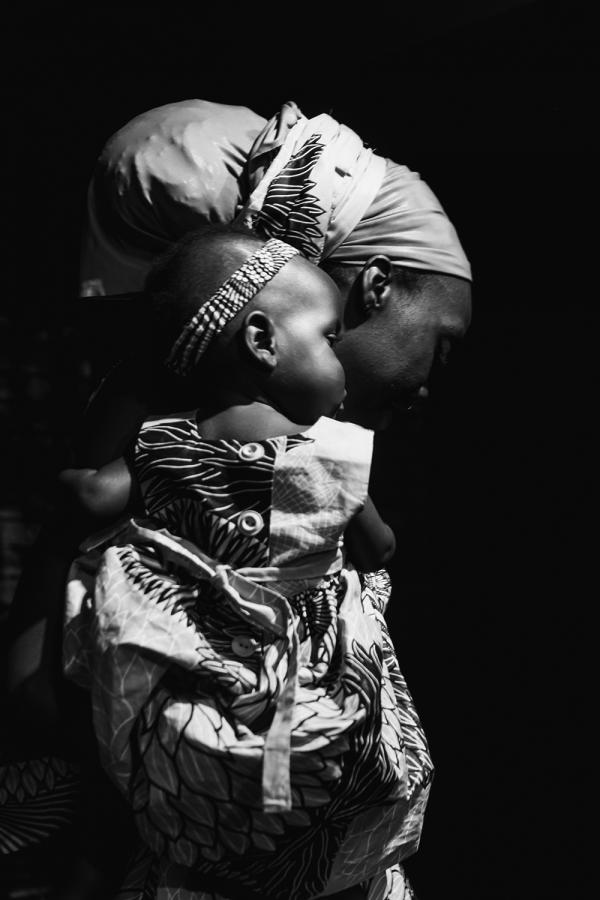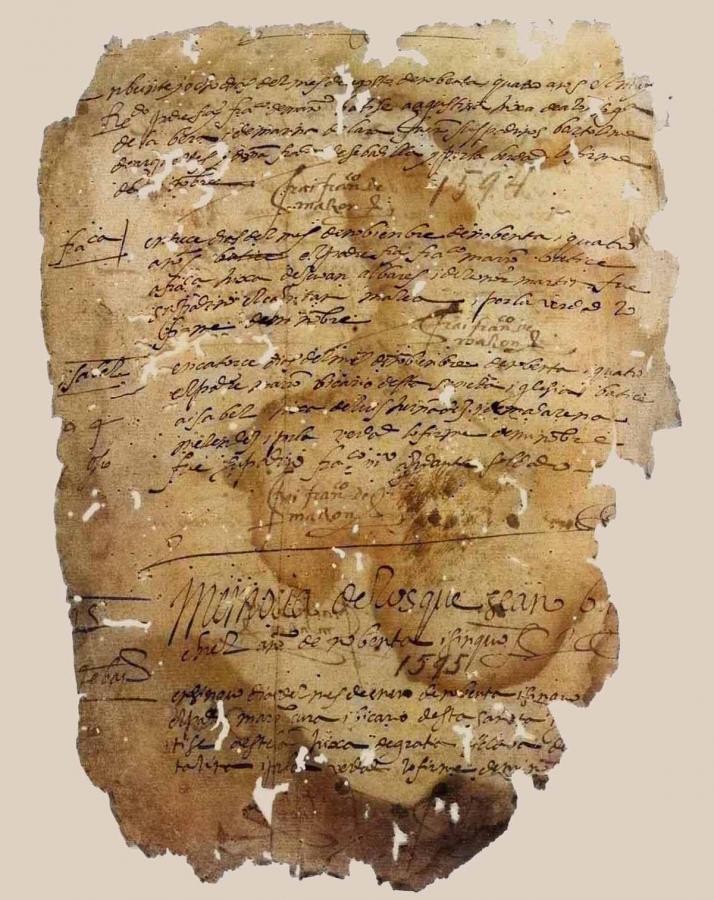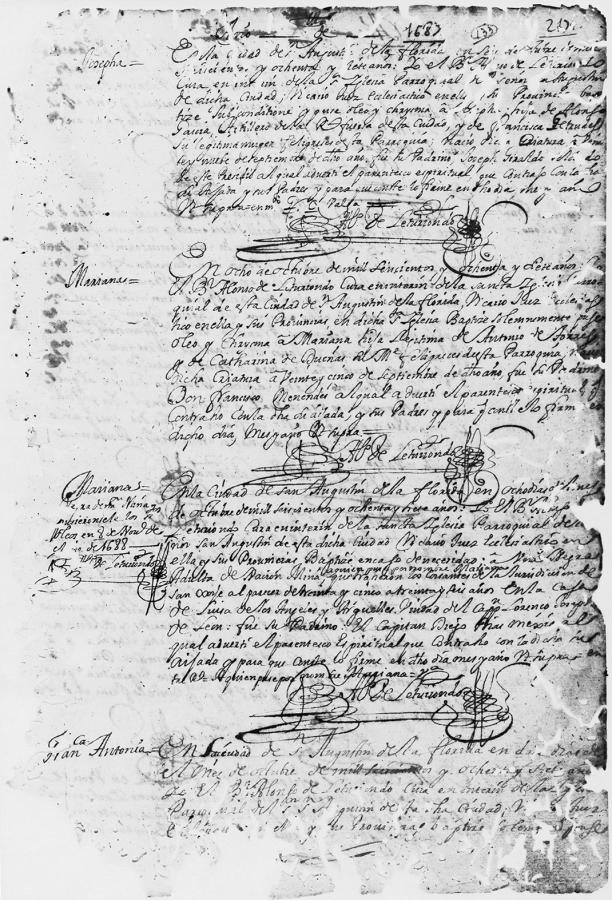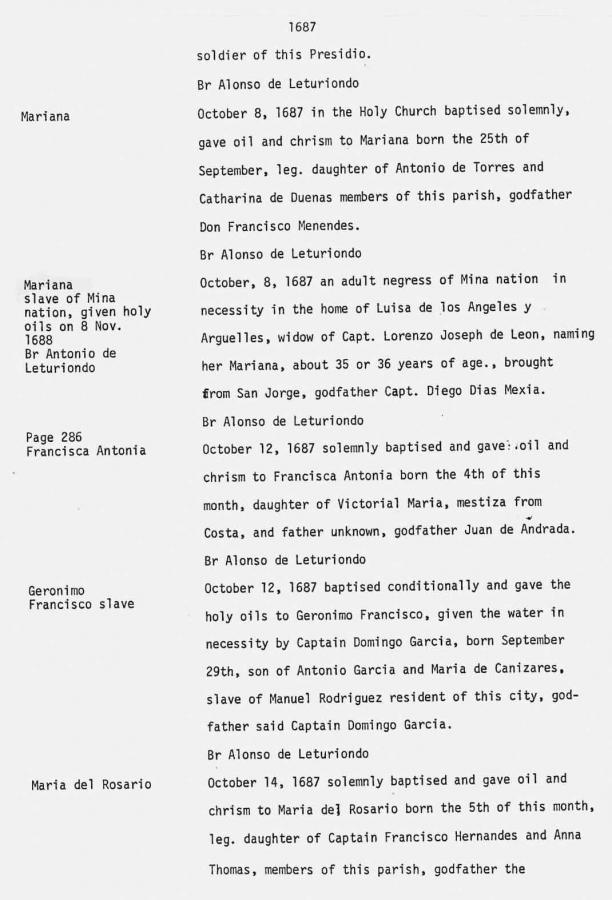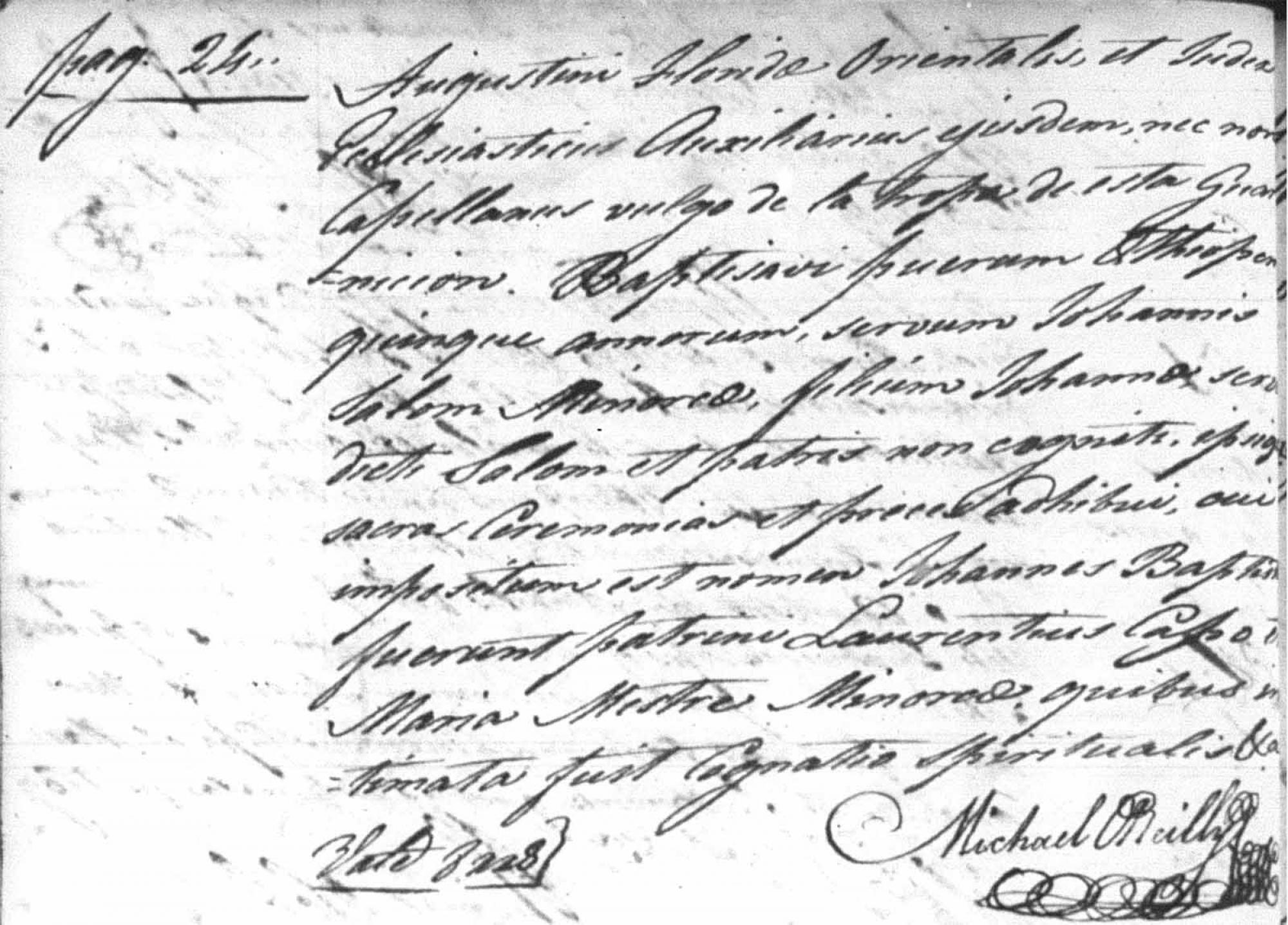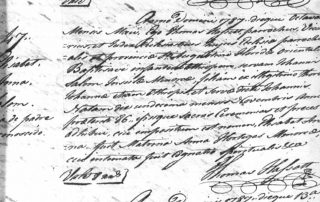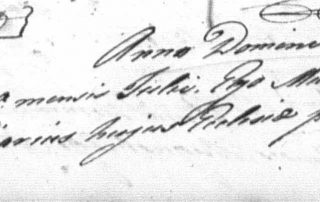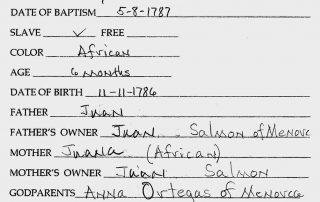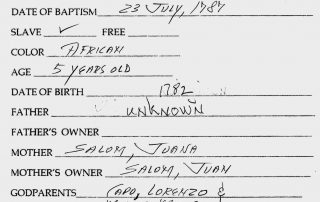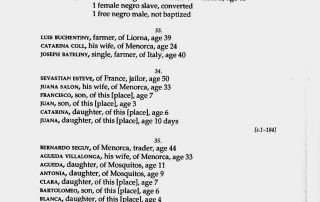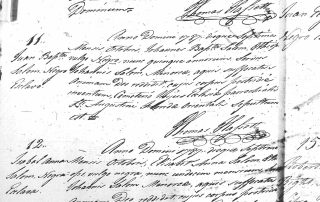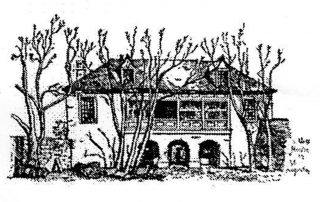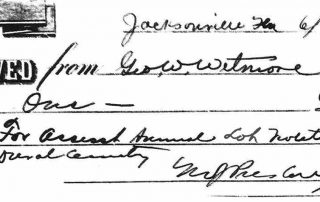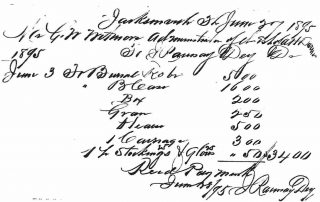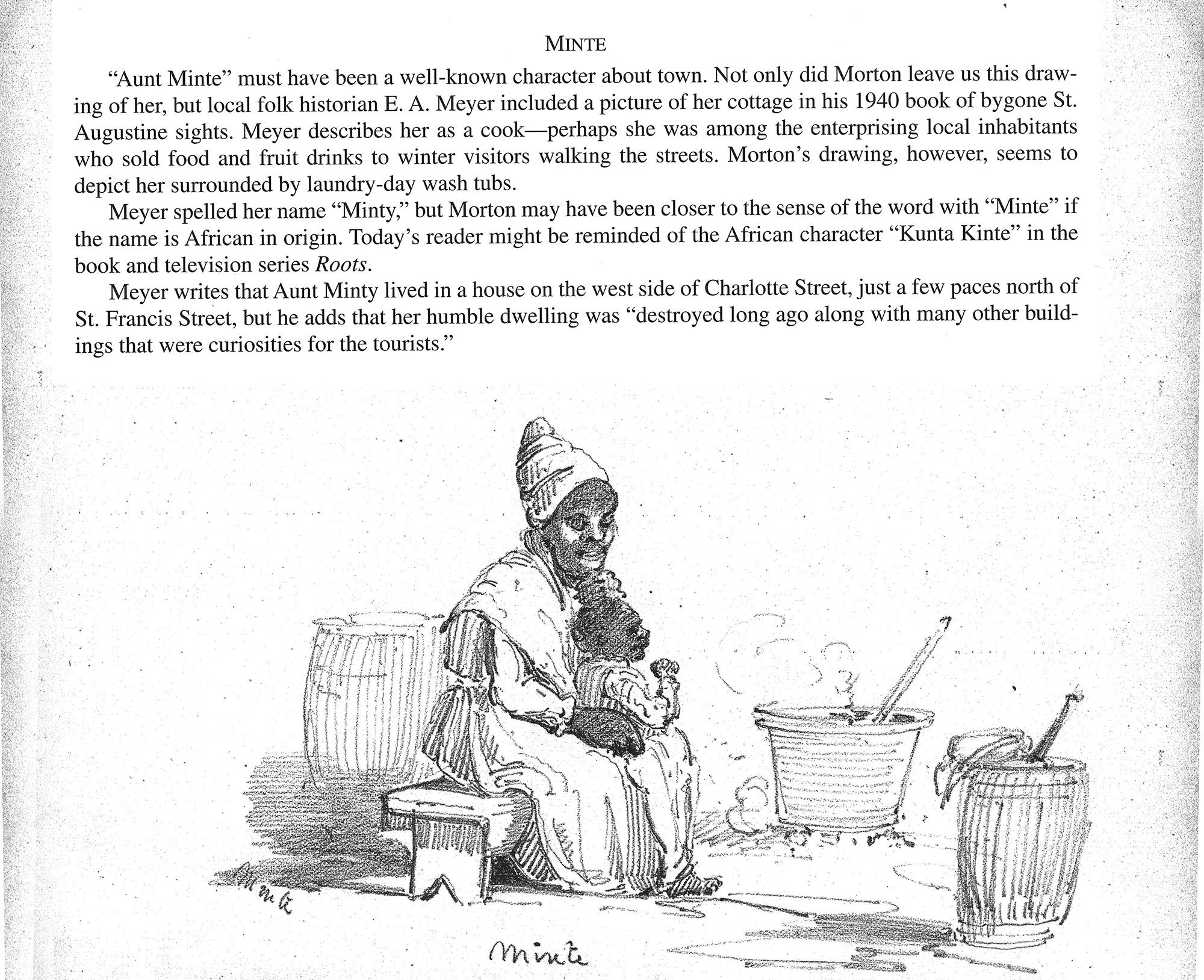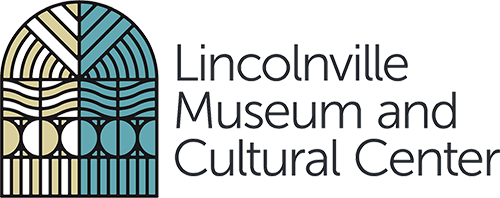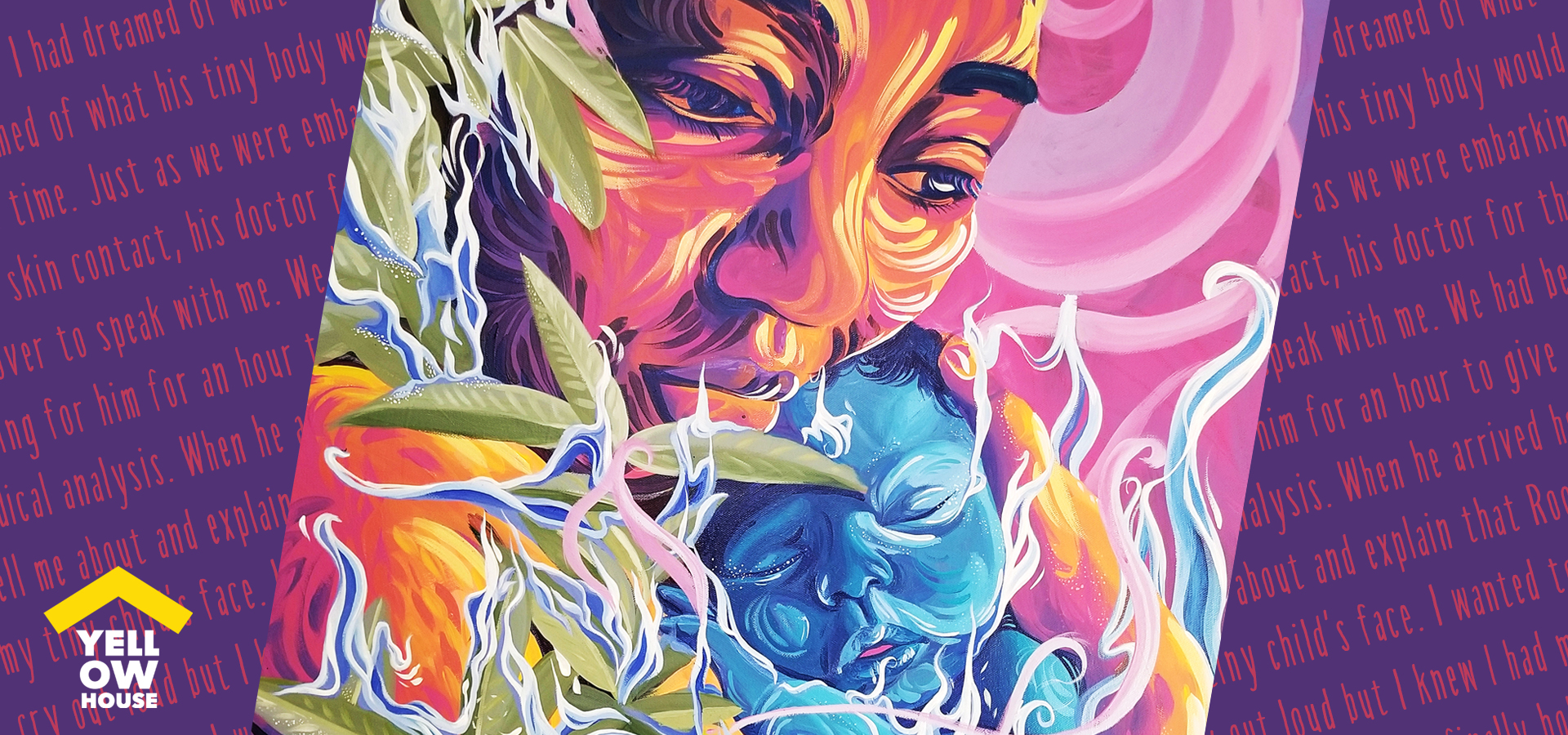
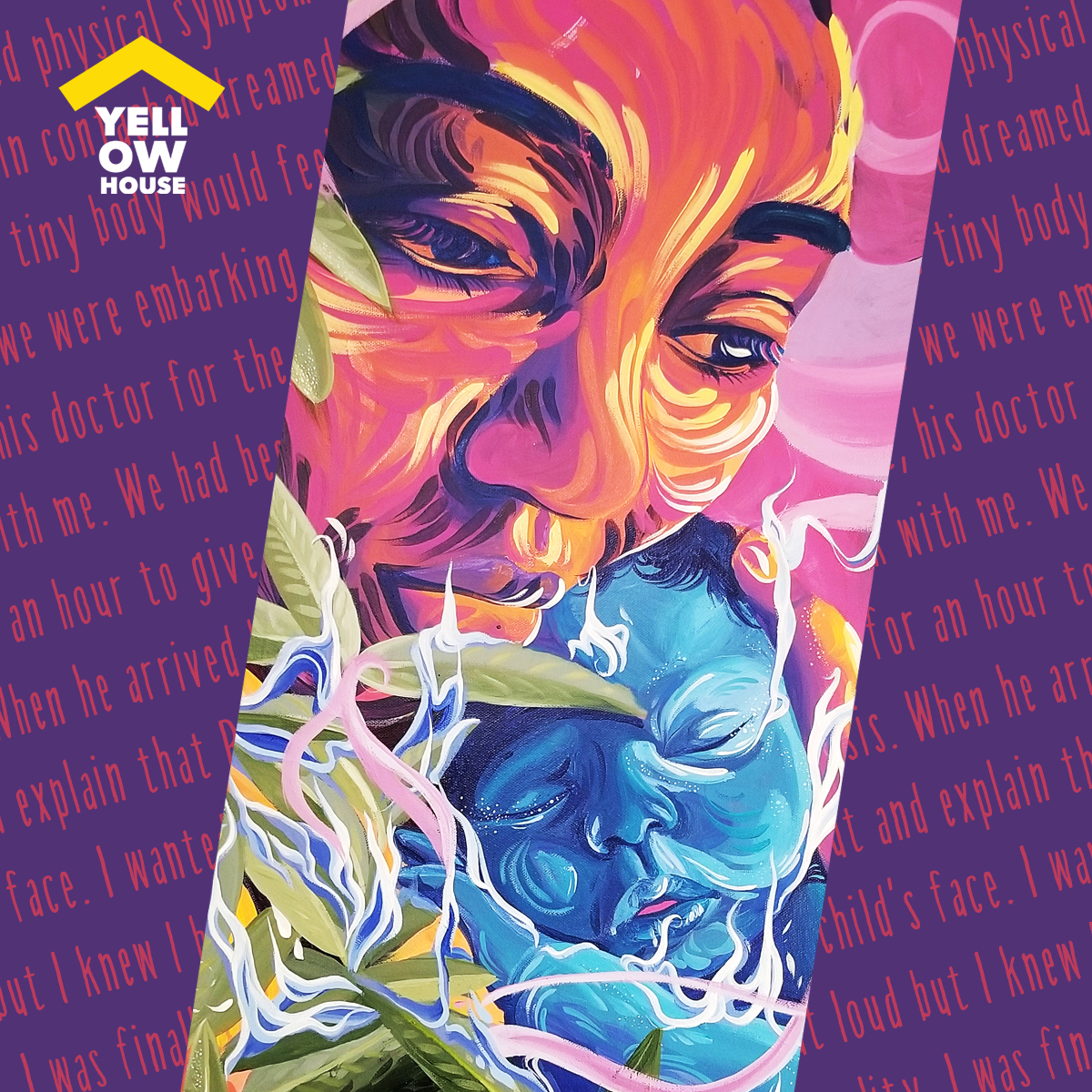
MAGIC, MIRTH, AND MORTALITY: Musings On Black Motherhood
Joy. Fear. Guilt. Generational connection. Grief. Deep love. These are only a few of the complex emotions experienced by all mothers. Magic, Mirth, and Mortality: Musings on Black Motherhood is an exhibition inspired by the lived experiences of writer, curator, community builder, wife, and mother Shawana Brooks. Centered in the exhibition are her ‘motherhood musings’ written and shared during her pregnancy, the premature birth of her son Roosevelt, and an extended stay in the Neonatal Intensive Care Unit. The vulnerability, honesty, and courage expressed in this collection of writings allowed hundreds, if not thousands, of people, to witness…in real time…the experiences of Shawana, her husband Roosevelt Watson III, and their son.
Brooks’ words are shown alongside visual art by Tatiana Kitchen, Marsha Hatcher, and Cheryl McCain. Their paintings, drawings, and prints express the courage, delight, vulnerability, and fierce determination that mark their experiences as mothers and views of the universality of this role.
The personal views expressed in the art become socially potent in light of the unique inequities and challenges faced by Black women from maternity to watching their children become adults. Statistics on mortality rates, inequity,, racism against Black women will add to the narratives of these four women and the women who came before them. This combination of memoir, visual art, and data is intended to create a space for healing, awareness building, sharing, and collective action. These intentions will be supported through a series of programs and experiences including spoken word events, artist talks, performances, and intimate conversations that will open opportunities for people to be seen and see one another.
We are unapologetically lifting up the experiences of Black women. We do so not to exclude others, but because this is we are compelled to shine the brightest light. Yet, there are universal truths offered up at every turn. Whether you are a mother yourself or someone who knows about mothering, a grandparent, a father, or a caregiver the words and images presented here will likely resonate. And we are all someone’s child….a child who entered this world carrying a history and set of realities as unique as we are.
Yellow House aims to create a gracious and brave space not only for the artists, but also for you. There is an opportunity within the space for you to do a bit of your own musing. While we invite you to breathe in the works of Shawana, Tatiana, Marsha, and Cheryl, we also honor your journey in all its complexity.
Meet The Artists
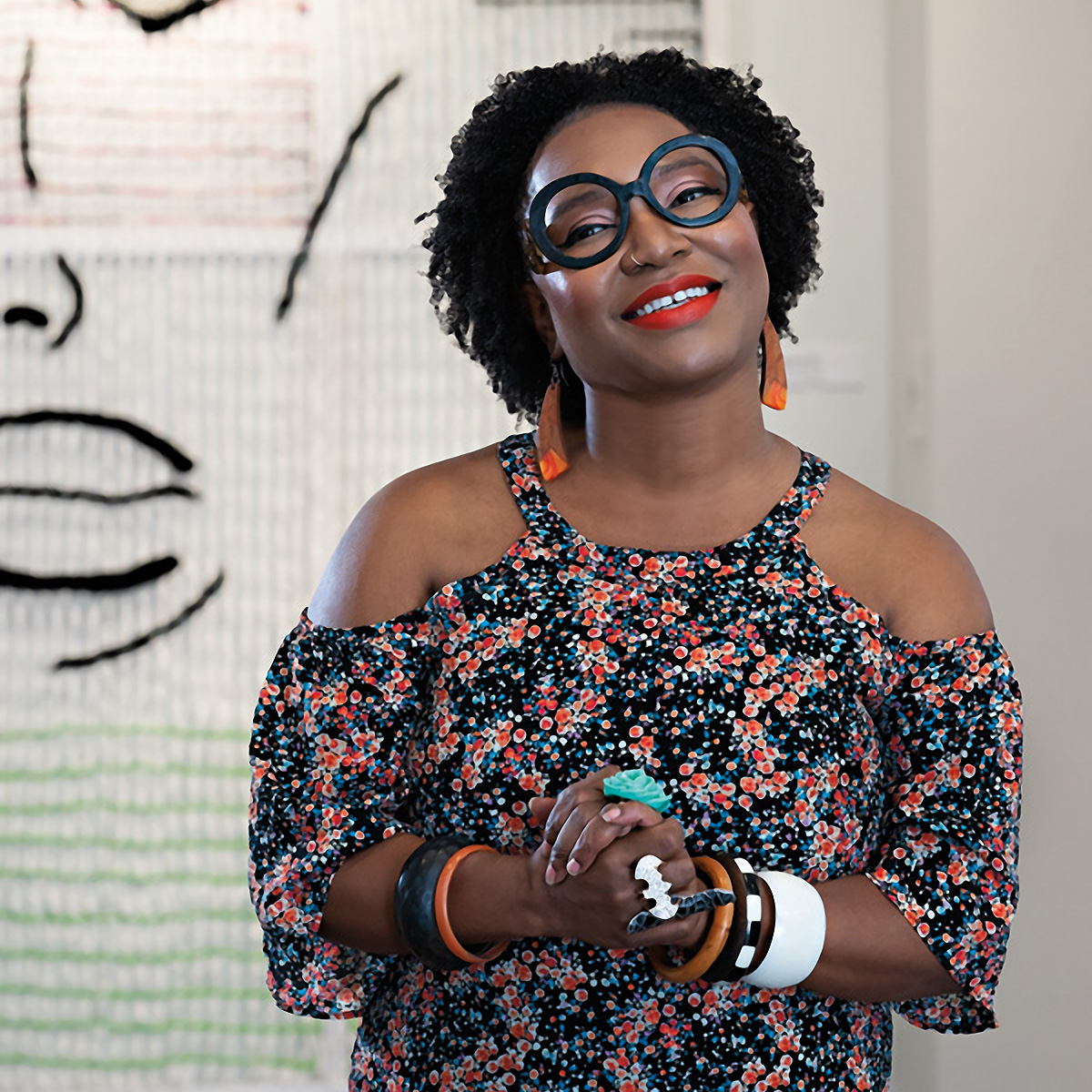
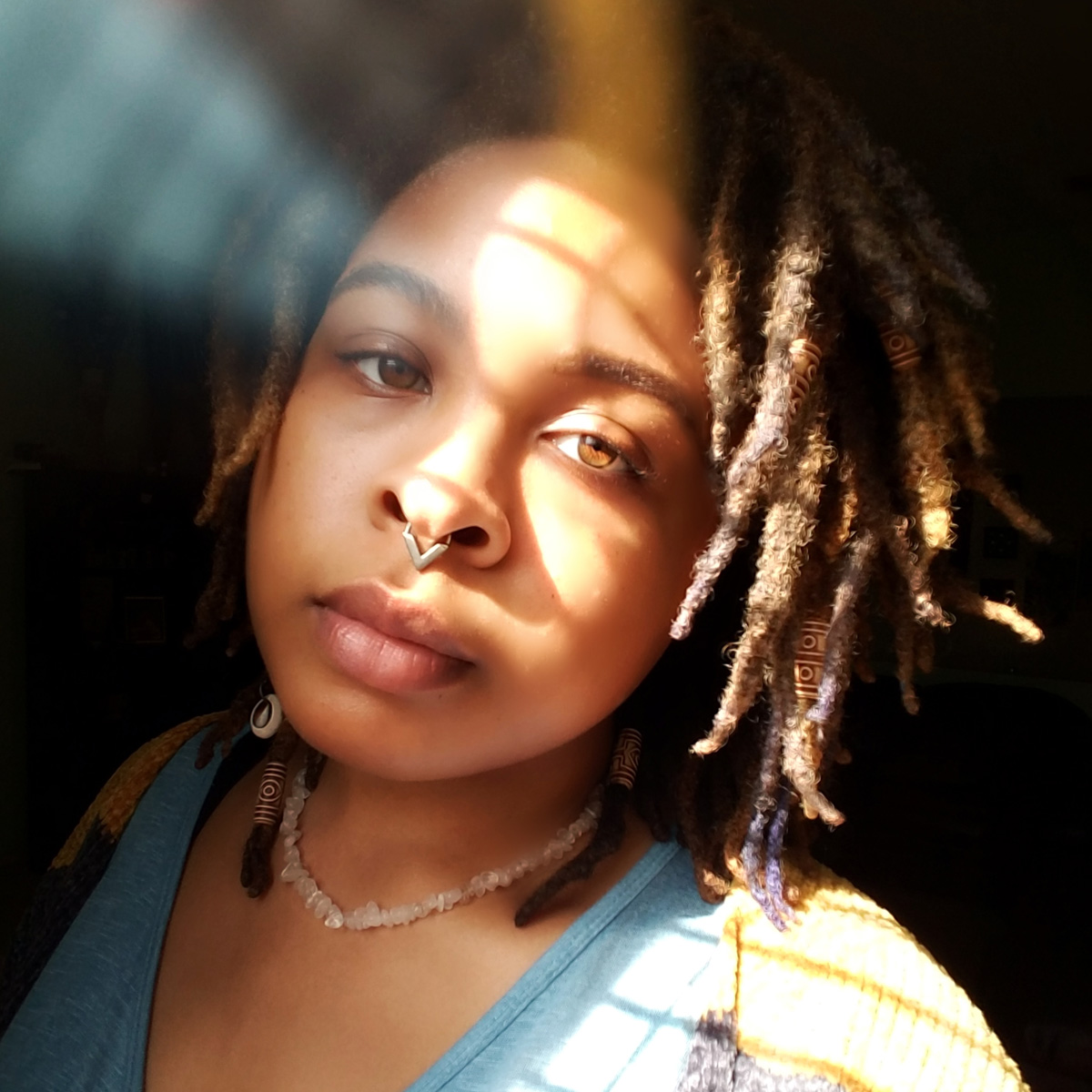
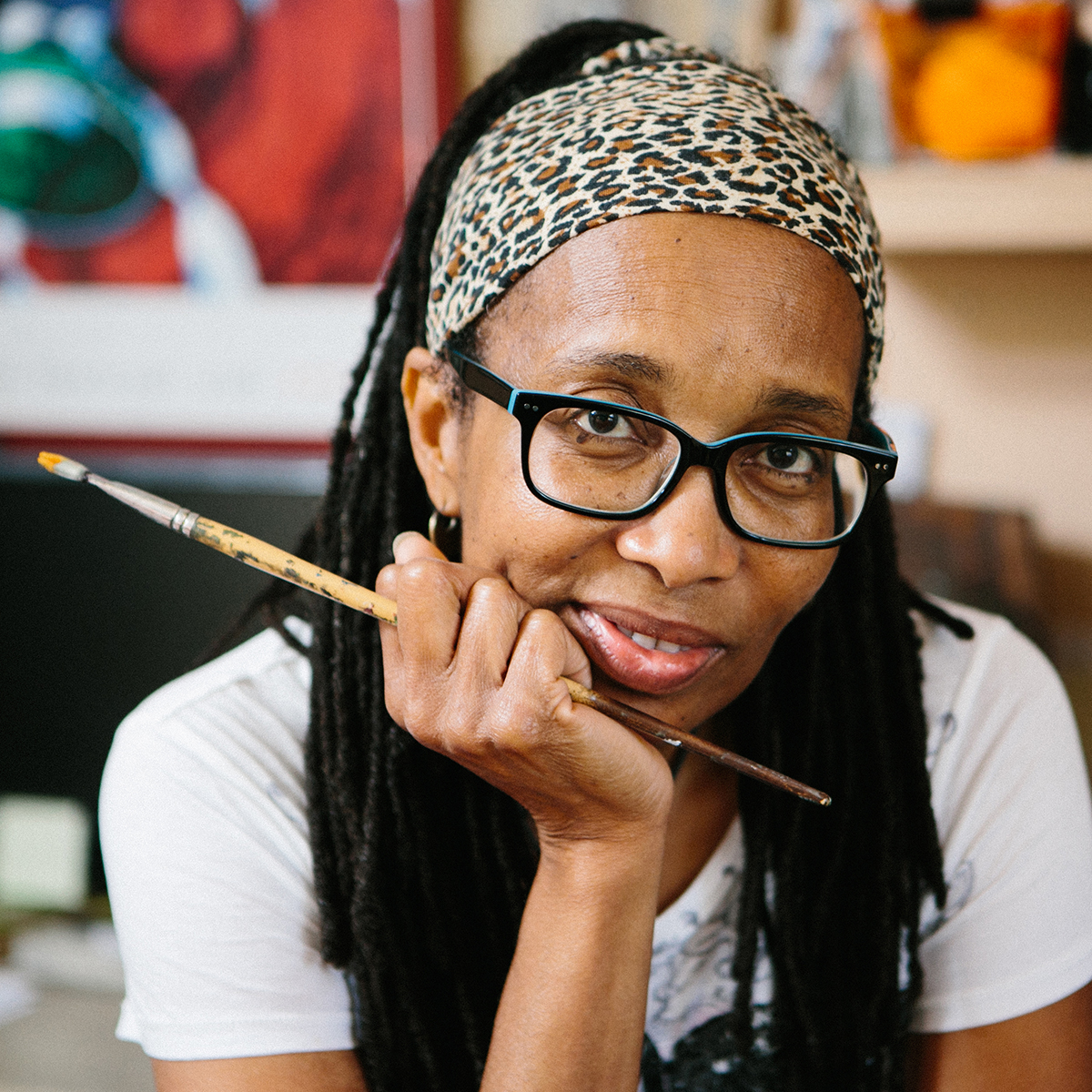
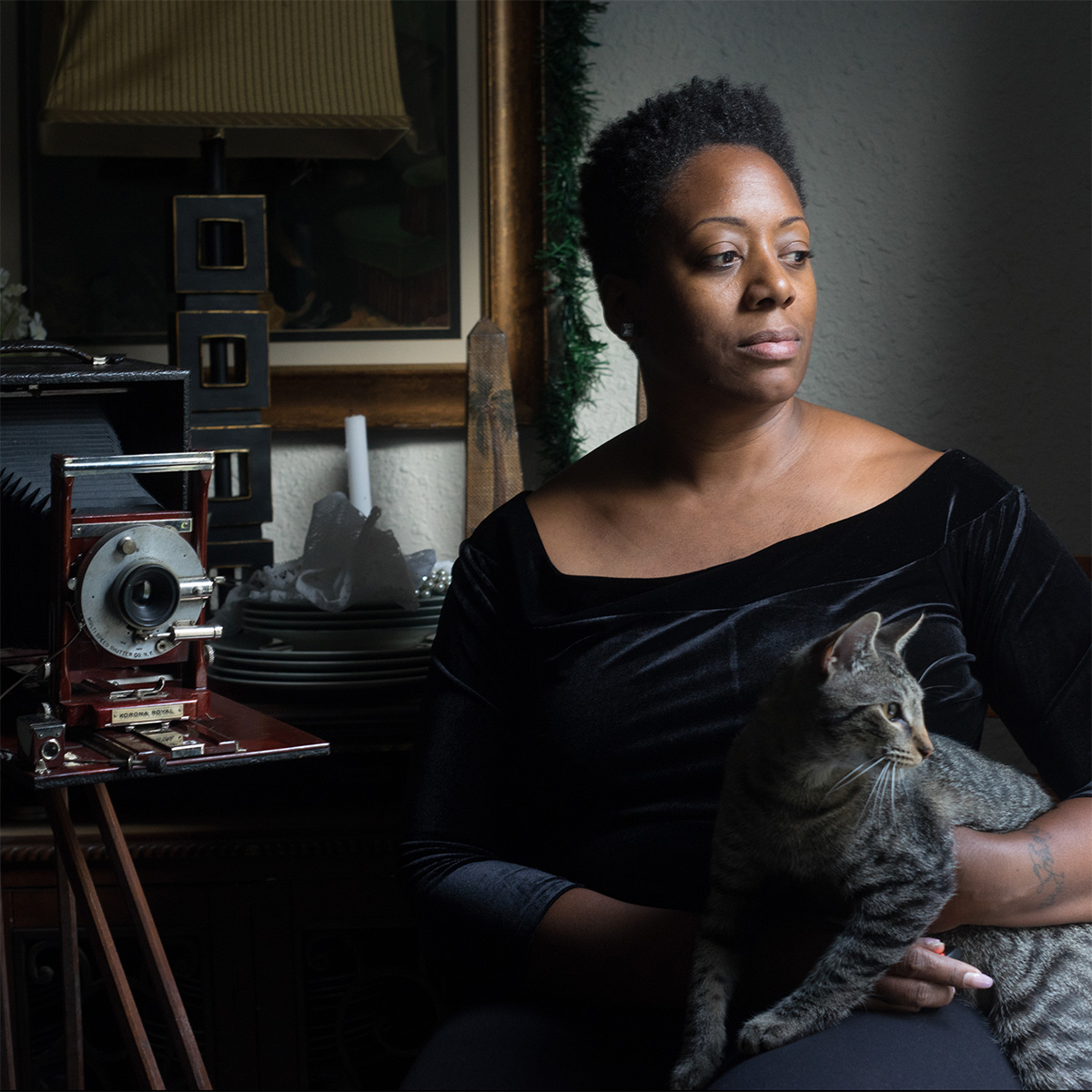
STATISTIC | In 1960, the United States was ranked 12th among developed countries in infant mortality. Since then, with its rate largely driven by the deaths of black babies, the United States has fallen behind and now ranks 32nd out of the 35 wealthiest nations.
STATISTIC | Black infants in America are now more than twice as likely to die as white infants, a racial disparity that is actually wider than in 1850, 15 years before the end of slavery.
STATISTIC | The lifelong accumulated experiences of racial discrimination is a proven risk factor linked to high rates of premature births and mortality rates for mother and baby.
STATISTIC | In 2019, in Jacksonville, 63% of homicide victims were Black men. Black men make up only 14% of the city’s population.
STATISTIC | Until recently, only two countries, the U.S. and Papua New Guinea, did not provide mandatory paid leave for the birth or adoption of a child. Legislation was passed in 2019, but only for federal workers.
STATISTIC | Black women are the most educated demographic in the United States, with 64% earning post secondary degrees. Yet, Black women earn only 61 cents on the dollar when compared with white men.
These contemporary experiences and perspectives are rooted in a long history that reaches back to the earliest years of colonization and the enslavement of Black women through those who were mothers of the Civil Rights Movement. As the exhibition moved to St. Augustine, the nation’s oldest city, historic objects and narratives lived alongside the musings of Shawana Brooks at the artworks in the original show.
The following material in both the Lincolnville Museum and Cultural Center and the St. Augustine Historical Society reflects the unique experiences of Black motherhood from St. Augustine’s founding to our contemporary moment in St. Johns County. The St. Augustine Historical Society’s exhibition highlights the experiences of enslaved Black mothers while the Lincolnville Museum and Cultural Center centers the stories of Black mothers in the twentieth and twenty-first centuries. Using their archival collections, each venue historically contextualizes some of the contemporary inequities Black women experience.
In these stories we find women who loved their children as only a mother can. They will have endeavored to find any opportunity, no matter how brief, to bring a smile – even laughter – into the lives of their children. It’s what mothers do! These mothers, however, would more often spend endless hours, days, even years in constant fear of what suffering the next sunrise might bring. Some loved their children enough to sacrifice their own lives for them. Some committed serious crimes, including murder, to protect them. One that we know of loved her children so much that she took their young lives from them, rather than allow them to endure their enslavement one day longer. To read their stories is to better understand the tragedy of chattel slavery, and the strength these women found within themselves to do that which must be done.
STATISTIC | In a 2017 study, over 30% of Black women reported that they faced medical discrimination because of their race. Over 20% of Black women reported that they refused to seek out medical treatment for fear of racial discrimination. These recent statistics are the legacy of centuries of medical discrimination in the present-day United States of America. Enslaved mothers were often severed from their communities of care and support.
Gratia | First Spanish Period, 1595 | St. Augustine Historical Society
STATISTIC | White Infant Death Rate for St. Johns County = 2.7 PER 1,000 LIVE BIRTHS • Black Infant Death Rate for St. Johns County = 22.4 PER 1,000 LIVE BIRTHS
In 1687, a decree from King Charles II of Spain offered safe haven in St. Augustine to any enslaved person escaping English plantations. This document records the “in necessity” baptism of Mariana Escovar, who was gravely ill when she arrived. Fleeing with 10 others, Mariana made the harrowing sojourn with a nursing infant on her back to their refuge in La Florida.
Mariana Escovar| First Spanish Period, 1687 | St. Augustine Historical Society
STATISTIC | The United States is one of only thirteen countries to experience an upward trend in maternal mortality rates in the last 25 years of the 158 countries that track such statistics. The other twelve countries are: Bahamas, Georgia, Guyana, Jamaica, North Korea, St. Lucia, Serbia, South Africa, Suriname, Tonga, Venezuela, and Zimbabwe.
Juana Solam was sold to a plantation in Havana, being forced to leave her two small children in the hands of her brutal owner in St. Augustine. Rather than accept this fate, Juana drowned her children in a well the night before her departure. She avoided execution once the true nature of her owner’s deviance was made public; however, she was forced to wear an iron collar for the next six years. She spent the rest of her life wearing anguish in her heart.
Juana Solam | First Spanish Period, 1787| St. Augustine Historical Society
STATISTIC | The Pregnancy Related Mortality Ratio (PRMR) for African American women over 30 is four to five times higher than white women. African American women in their early twenties have a PRMR at least 5.2 times higher than white women.
Violet Pinckney’s teenage children were sold in the 1850s. Her son, Alexander H. Darnes, never forgot his mother and sister. In 1880, Darnes received his M.D. from Howard University and settled in Jacksonville becoming the first African American physician in the city. He brought his mother and sister to live with him and served his community until his death in 1894. Violet lived many years raising the children of others, but in the end the good mother found solace
Images above include a receipt for $1 (6/3/1895) and funeral expenses (6/27/1895) for Violet Pinckney
Violet Pinckey | Antebellum Period | St. Augustine Historical Society
“Black women are undervalued. They are not monitored as carefully as white women are. When they do present with symptoms, they are often dismissed.” — Dr. Ana Langer, director of the Women and Health Initiative at the Harvard T.H.
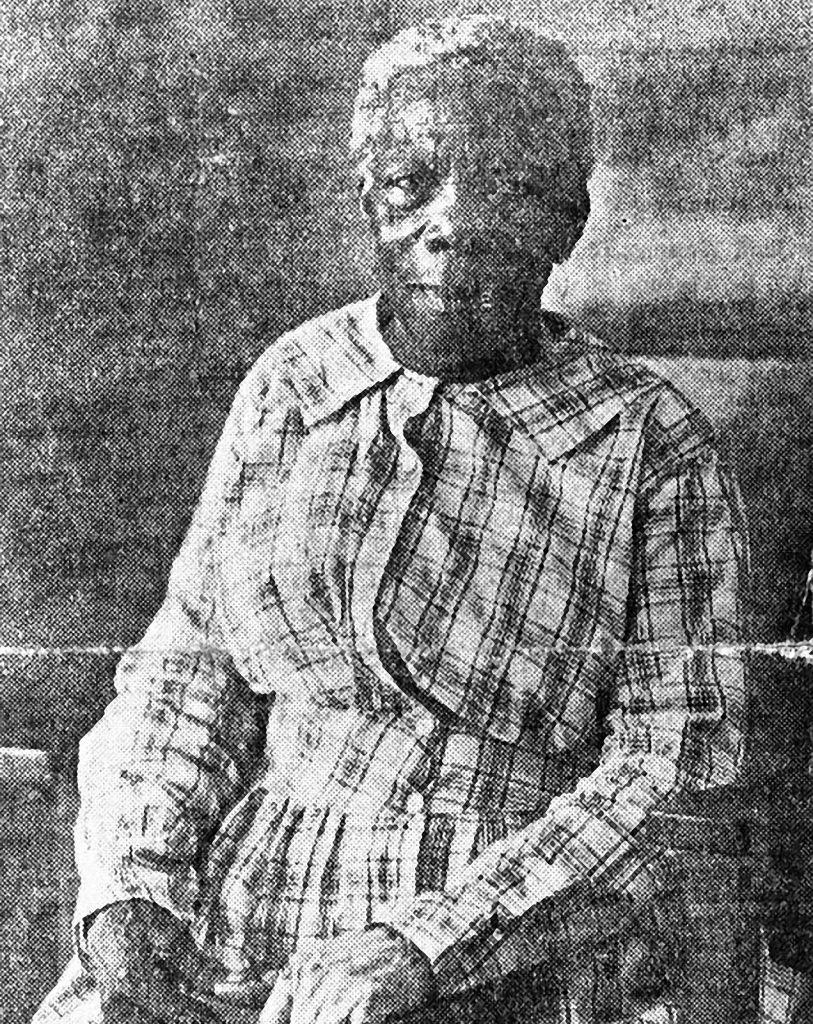
Known only as Amelia, this nine-year-old girl was included in a list of chattels purchased to work a sugar plantation in Louisiana. Married to a man named David at age 19, Amelia lost her first child while pregnant due to frequent beatings. Of her three children who survived, Amelia was allowed to raise only one, as the others were sold. Amelia was brought to St. Augustine where she worked as a laundress for her owner.
Amelia | Antebellum Period | St. Augustine Historical Society
“Reports of enslaved women being severely whipped ‘for not coming to the quarters of the overseer or master for the purposes of prostitution’ were dutifully recorded.” — Slave Breeding: Sex, Violence, and Memory in African American History by Gregory Smithers
In 1867, Henry J. Morton captured the image of a woman surrounded by laundry in a community sketch of St. Augustine. Known as Aunty Minte, she was a cook at a local boarding house and lived on the corner of St. Francis and Charlotte. Her son Thomas is the subject of a photograph by Earnest A. Meyer. The photograph and sketch are all that we know about this former enslaved woman.
Aunty Minte | 1867 | St. Augustine Historical Society
“He is not hers, for cruel hands
May rudely tear apart
The only wreath of household love
That binds her breaking heart”
— Francis Ellen Watkins Harper, “The Slave Mother.” American Poetry: The Nineteenth Century (Library of America, 1993
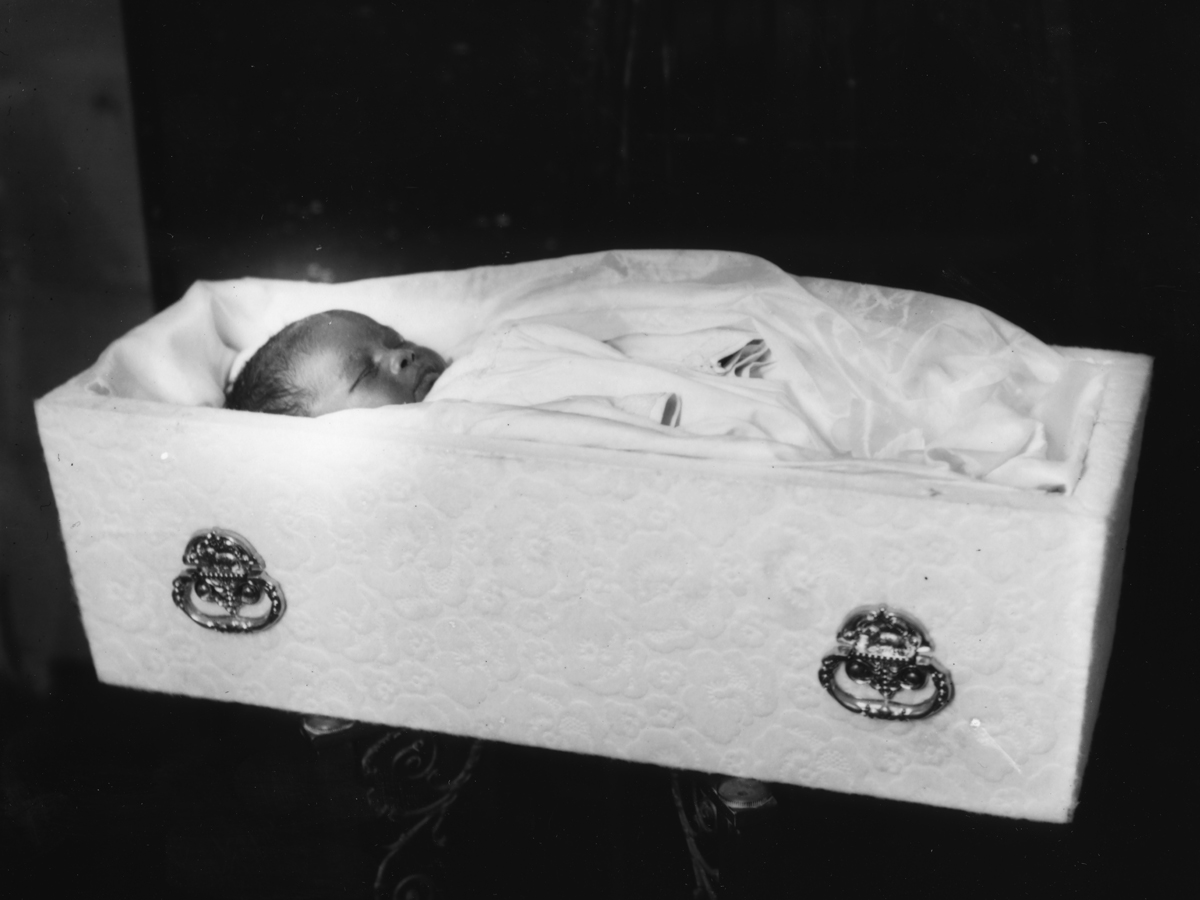
Richard Alonysius Twine’s photographs are a lens to life in Lincolnville in the early 1920’s. Twine captured both happy and solemn moments on camera, the latter shown here. A funeral portrait, an infant is laid in an open casket on the porch of what is presumed to be their family’s home. The identity of the infant is unknown.
Funeral Portrait of Unidentified Infant | circa 1922 | Image from the Collection of the St. Augustine Historical Society Research Library
Not every mother goes through all those stages with their children and not all motherhood is rooted in biological connections.
Many of the women who were considered community mothers never gave birth, but took on the role of nurturing youth as caregivers, teachers and nurses. Black mothers have often had to take care of not only their own children and grandchildren, but historically cared for the children of white slaveholding women or later employers, while leaving their children with other relatives.
These are the stories of three community mothers: Katherine Twine, Janie Young Rice and Lottie Pierson. While Twine is the only one who had biological children, these three women worked as nurses and as advocates for the community. Magic, Mirth, and Mortality depicts the determination and resilience of Black mothers that face these hardships and seek to create a caring environment for their children and community.
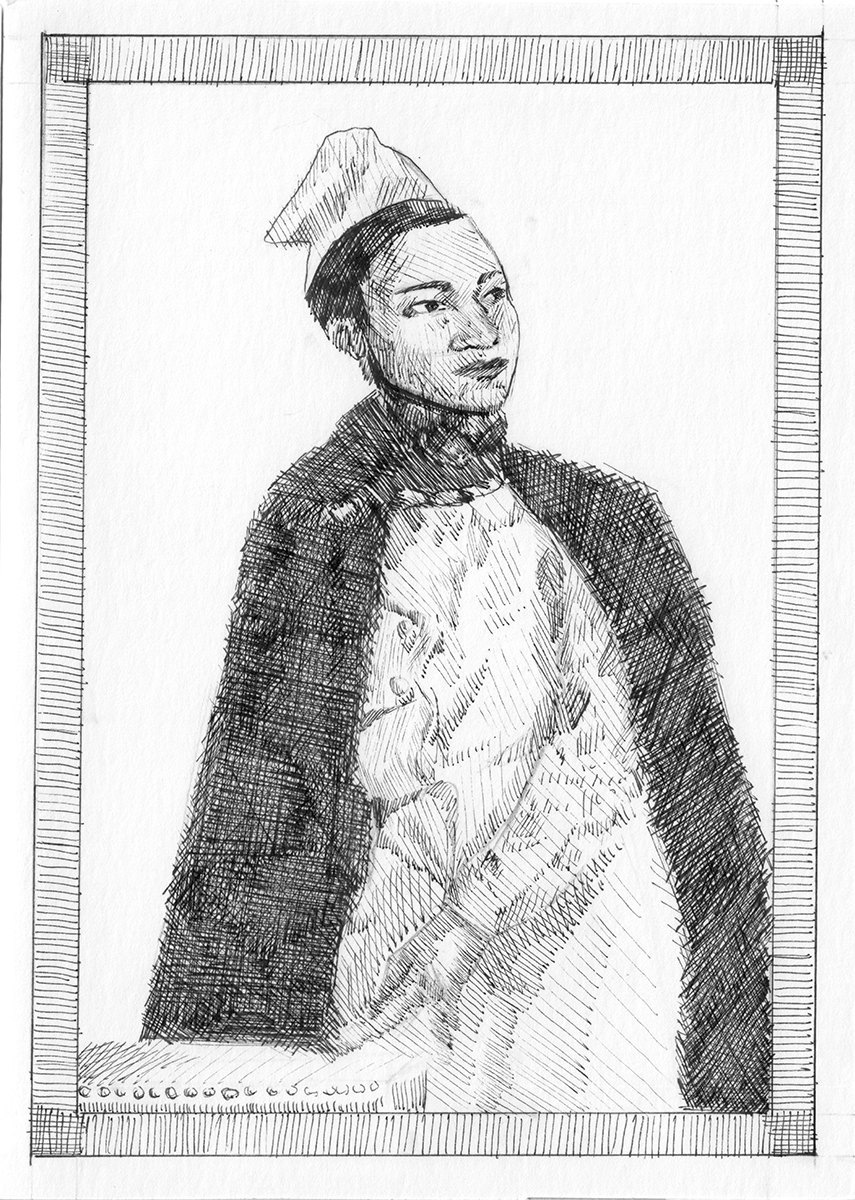
Janie Price drawing by Celia Nofsinger
JANIE YOUNG PRICE
Accessibility to medical facilities and prenatal care was limited throughout the Jim Crow Era and has continued to present day. Segregation extended to hospitals and nurses, to the point that they had separate blankets. Janie Young Price, a local Lincolnville resident and community leader, worked to help her community in any way she could. Traveling all over the county, Price worked at all hours of the day to provide healthcare to those who did not have a doctor nearby. She helped young mothers by advocating for pre and postnatal care and infant formula for women working in migrant camps in St. Johns County.
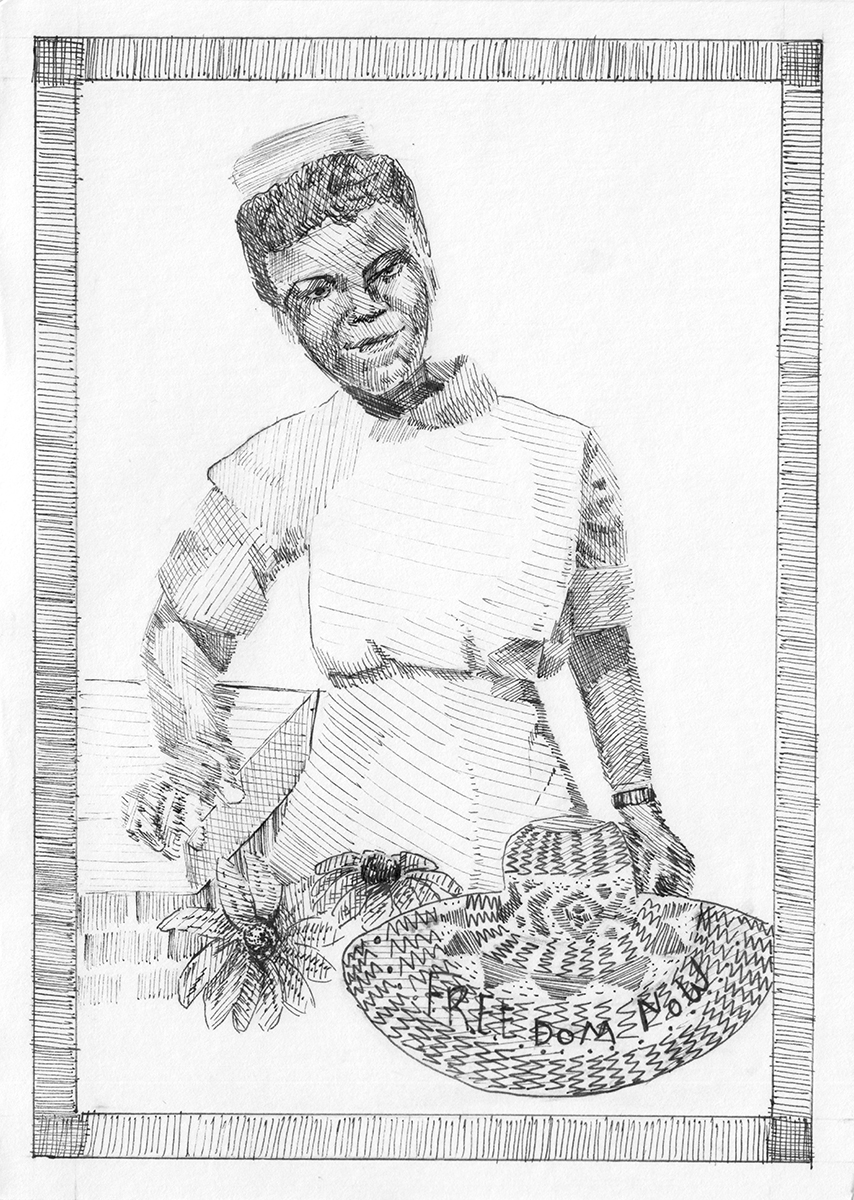
Katherine Twine drawing by Celia Nofsinger
KATHERINE TWINE
Katherine Twine was often referred to as “Our Rosa Parks.” Twine spent endless hours nurturing the children of others as a certified practical nurse at Flagler Hospital and as a community organizer and civil rights demonstrator. In addition to her commitments, Twine performed crafts such as doll making, and knitting. The connection between fabric and motherhood is evident in how a warm blanket is the first thing babies are swaddled with after leaving the warmth of a mother’s womb. Women often knitted household items such as pot holders, baby blankets and booties.
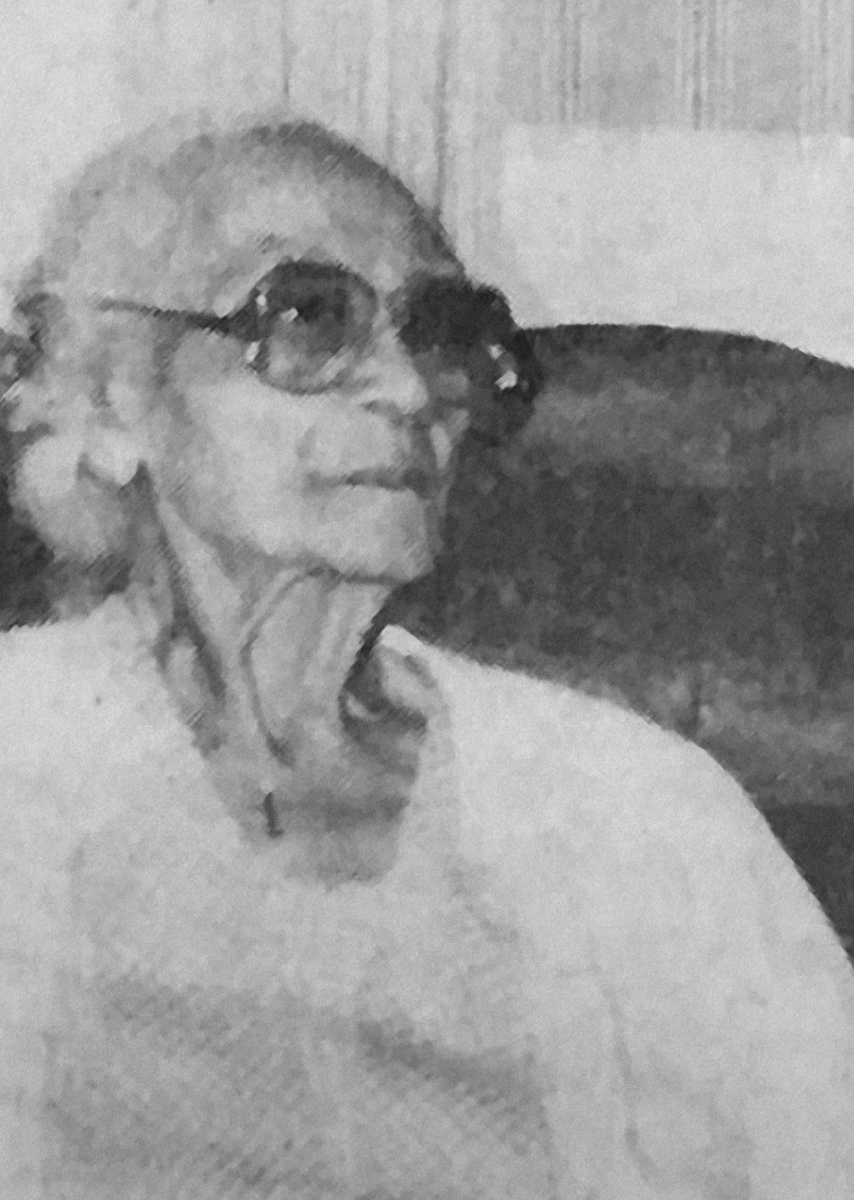
Lottie Pierson Johnson photo by Anne C. Heyman
LOTTIE PIERSON JOHNSON
Lottie Pierson Johnson, the first Black nurse at Flagler Hospital would get her start as a pre-teen working with Dr. Daniel W. Roberts. Roberts was the first African American doctor to operate at Flagler Hospital, and even had his own hospital at 80 Bridge St. He helped her to pursue nursing school, but a sick mother forced her to leave her studies and return to St. Augustine. She later became the first African American nurse to work at the Florida East Coast Railroad Hospital.
Artist Talks
More Musings
To muse is to think about something carefully, to contemplate, to meditate. Now that you have taken in this exhibition we invite you to muse for a moment. In the space of Yellow House, visitors added their thoughts to an interactive wall, extended the story set up by our artists.
How has this collection of art and writings changed or reinforced your perceptions or lived experiences of motherhood? We hope that you will share your musing by sending it to us through the link below. This gracious space will add to the conversation about who we are, what we have learned, and how we envision a more just world for all mothers.
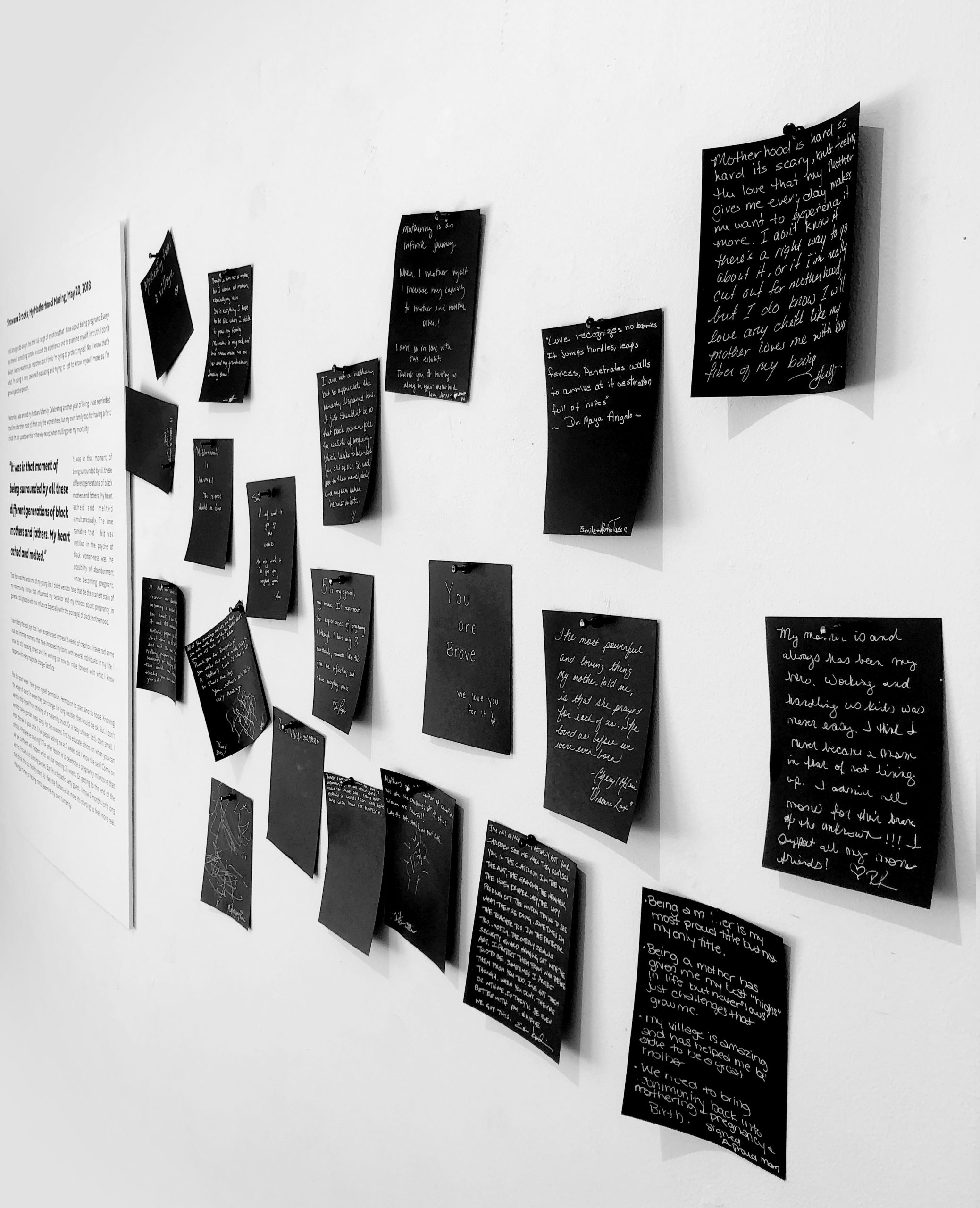
Some of the musings shared with us …
Being a mother is my most proud title, but not my only title.
Motherhood is hard. So hard it is scary. But feeling the love that my mother gives me everyday makes me want to experience it more. I don’t know if there is a right way to go about it, or if I am cut out for it, but I do know I will love any child like my mother loves me.
The morning rain nurtures the grass to grow green. Your musings nurture the soul to grow in beautiful, bountiful and bold ways! Congratulations!
My mother is and always has been my hero. Working and handling us kids was never easy. I think I never became a mom in fear of not living up. I admire all moms for being brave in the unknown.
I am not a mom, but your children see me when they don’t see you. In the classroom I’m the mom, the aunt, the grandma, the neighbor, the honey dripper lady, the lady peeking in the window trying to see what they’re doing. Sometimes I am the teacher, too…. #HiFive. We got this.
Mothering is an infinite journey. When I mother myself I increase my capacity to mother and nurture others. I am so in love with this exhibit. Thank you for inviting me along.
We need to bring community back into mothering and pregnancy and birth.
This is so moving and powerful. It has touched my soul.
I am a Mother to many although I have never given birth. I have fed, clothed, served as Legal guardian, cried, and chastised. Moreover, I know the LOVE and sacrifice of Motherhood from my own Mother and am in awe of the mirth and magic. Hence, my charge to change the musings to laws because the statistics are as painful as Iabor.
As one who hung on every word of Shawana’s musings as she shared them in real-time, I find that experiencing them now, layered with the powerful visual works by such gifted artists, in a time of necessary community distancing, is deeply intensely, emotional. Thank you for making this available online. this exhibition underscores so much about what is happening now as we see the pandemic expose the reality behind what we have called civil society-revealing, in a global and deeply personal way, the tragic disparities and injustices in our social structures. Listening to Shawana give voice to her personal yet universal truths gives me hope that we can emerge with greater reverence for life- all lives -and work toward stronger connections, the righting of wrongs, and the restructuring true community.
This visual art, words spoken and statistics written bring tears as I consider the ever-present pain experienced by African Americans. From these tears come a renewed commitment to use my white privilege to create equity. I know it won’t happen in my lifetime and my commitment does not falter but is strengthened.
Thank you for engaging in the collective work of Yellow House as we take this exhibition online during a time of physical distancing, anxiety, and dramatic change. Our work lives at the intersection of art and community, centering the experiences and stories that help spur us into action to create a more just world. We believe this exhibition and the artists whose works are lifted up for all of us to see are relevant at this time. It is our hope that you find empowerment in the truths shared here, hope in the resiliency expressed, and inspiration to be part of the change that we need.
Your contributions support our mission of connecting art and community to build understanding, inspire empathy, and spark civic engagement.
exhibit curated by HOPE McMATH | exhibit webpage designed by CARYL BUTTERLEY
